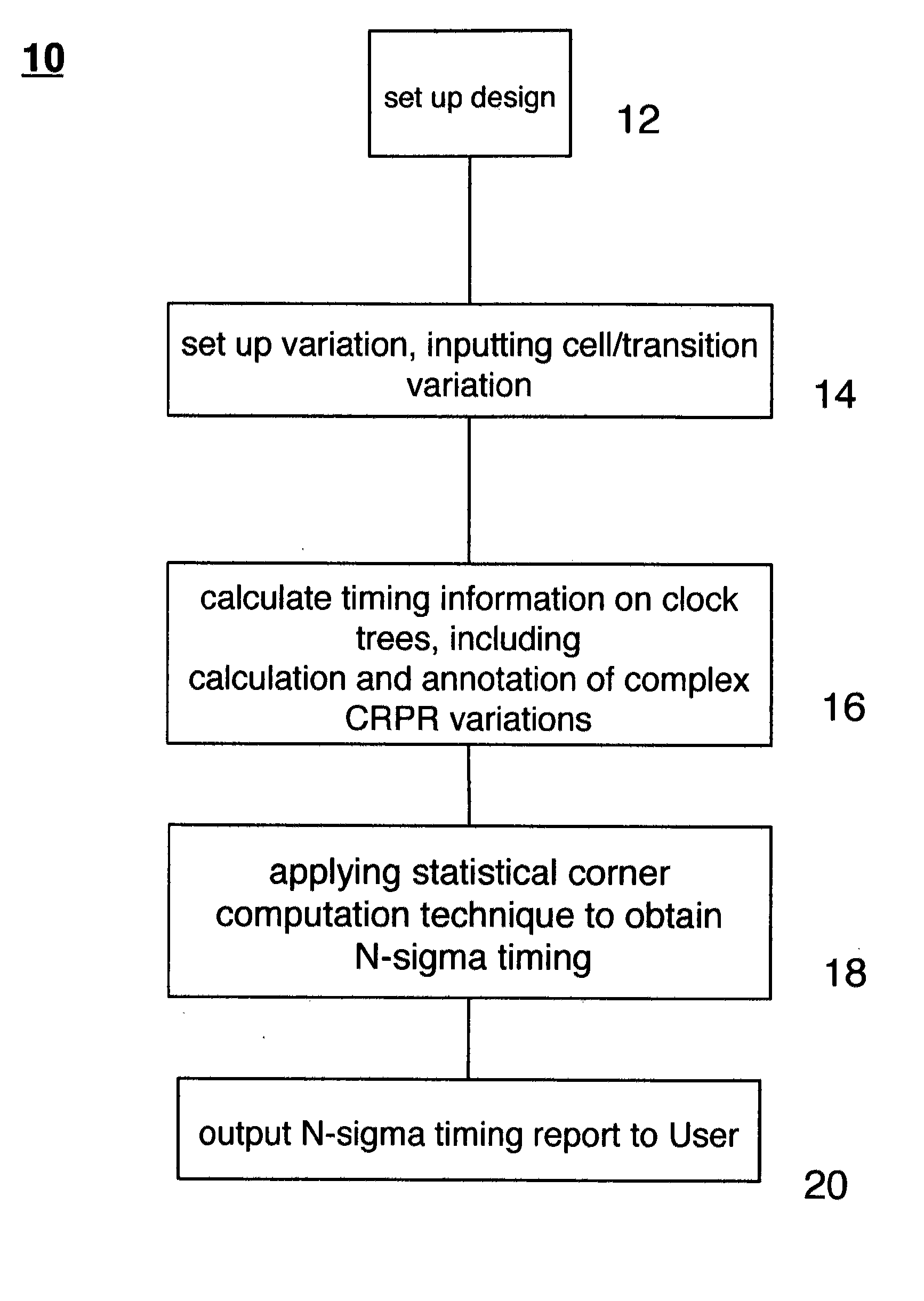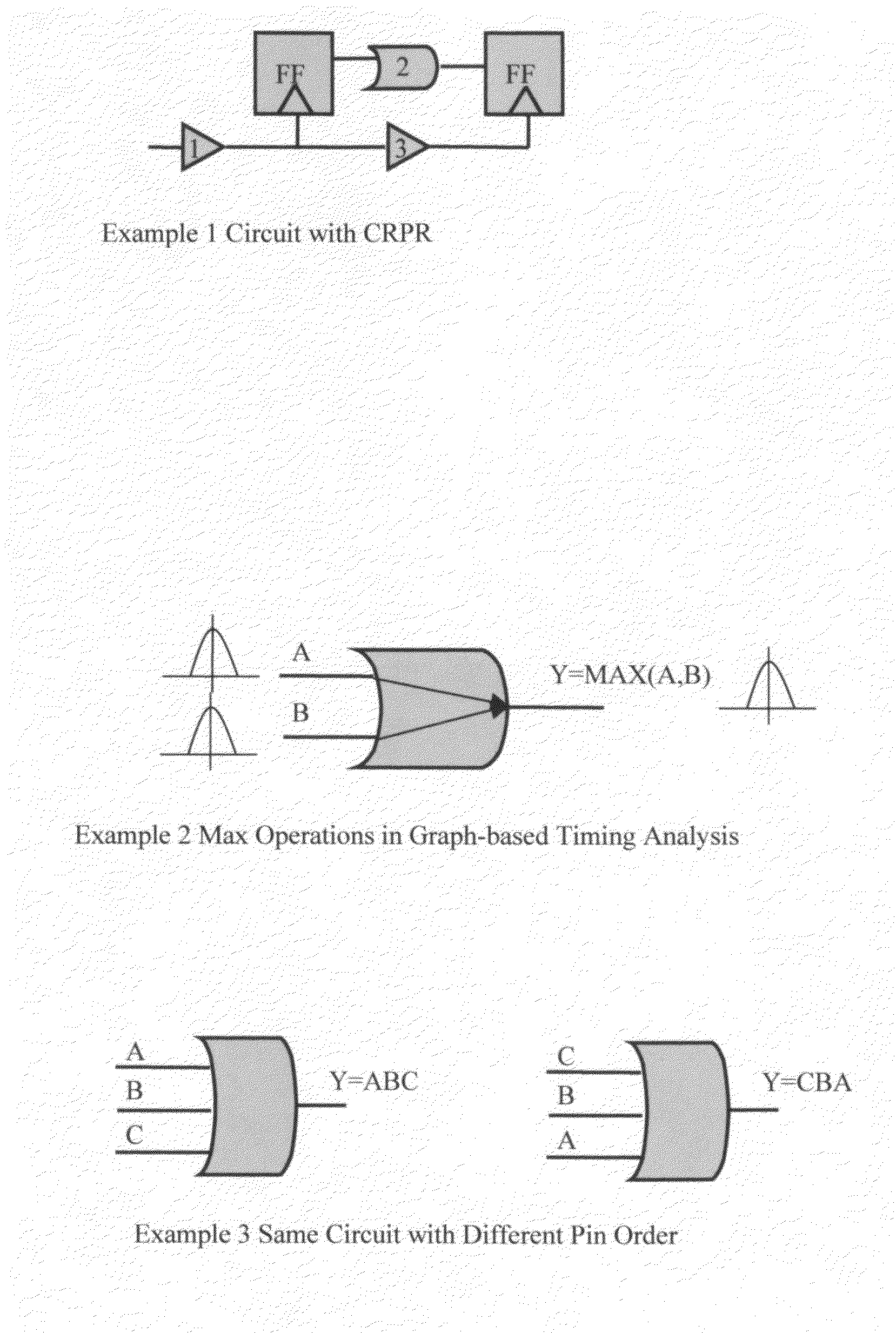Sensitivity-based complex statistical modeling for random on-chip variation
a complex statistical modeling and random on-chip variation technology, applied in the field of integrated circuit timing analysis, can solve the problems of reducing affecting the rapid and wide adoption of technology, and increasing the pessimism of advanced technology nodes, so as to reduce the learning curve, increase the use rate of technology, and accurate calculation of statistical variations
- Summary
- Abstract
- Description
- Claims
- Application Information
AI Technical Summary
Benefits of technology
Problems solved by technology
Method used
Image
Examples
example 1 (
[0024appearing on sheet 2 of the figures) shows a circuit that has five cells. If we ignore the delay and constraints from two flip-flops, we can calculate the arrival time and require time of the circuit as:
arrival=d1+d2
require=d1+d3
[0025]Assume each cell has 100 pico second cell delay and 10% random delay variations, the arrival time and require time can then be expressed as
arrival=100+10p1+10p2
require=100+10p1+10p3
[0026]If we keep individual random variables, we can calculate the slack as required time minus arrival time
slack=10p3−10p2
slack3sigma=−30√{square root over (2)}
[0027]However, if we compact multiple random variables into one as described in Equation (3), the arrival time and require time we will end up having is
arrival=100+10√{square root over (2)}p
require=100+10√{square root over (2)}p
[0028]As you can see, we no longer know what part of the arrival and require time is from common cell. In other words, we lose the statistical correlation information. To guarantee pess...
PUM
 Login to View More
Login to View More Abstract
Description
Claims
Application Information
 Login to View More
Login to View More - R&D
- Intellectual Property
- Life Sciences
- Materials
- Tech Scout
- Unparalleled Data Quality
- Higher Quality Content
- 60% Fewer Hallucinations
Browse by: Latest US Patents, China's latest patents, Technical Efficacy Thesaurus, Application Domain, Technology Topic, Popular Technical Reports.
© 2025 PatSnap. All rights reserved.Legal|Privacy policy|Modern Slavery Act Transparency Statement|Sitemap|About US| Contact US: help@patsnap.com



